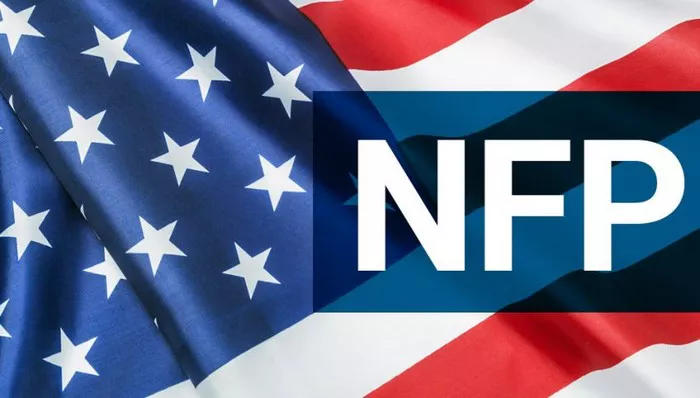The issue of racial and ethnic disparities in nonfarm payroll employment continues to be a significant concern in many countries worldwide. While progress has been made in addressing these disparities, challenges persist, reflecting systemic inequalities and barriers that hinder equitable access to employment opportunities for individuals from diverse racial and ethnic backgrounds. Understanding the underlying factors contributing to these disparities and implementing targeted initiatives to promote inclusivity and diversity within the workforce are crucial steps toward fostering a more equitable and representative labor market. In this comprehensive analysis, we’ll delve into the complexities of racial and ethnic disparities in nonfarm payroll employment, examine the contributing factors, and explore potential strategies to promote greater equality and inclusivity in the workforce.
I. Understanding the Scope of Racial and Ethnic Disparities in Nonfarm Payroll Employment
1. Historical Context:
Racial and ethnic disparities in nonfarm payroll employment are deeply rooted in historical injustices, discriminatory practices, and systemic biases that have perpetuated unequal access to employment opportunities for marginalized communities.
2. Current Landscape:
Despite advancements in labor market policies and diversity initiatives, data continues to highlight persistent disparities in nonfarm payroll employment, with certain racial and ethnic groups facing higher rates of unemployment, underemployment, and limited access to high-skilled and managerial positions.
II. Key Factors Contributing to Racial and Ethnic Disparities in Nonfarm Payroll Employment
1. Discriminatory Hiring Practices:
Biases and discriminatory practices in the recruitment and hiring processes contribute to the underrepresentation of certain racial and ethnic groups in nonfarm payroll employment, perpetuating systemic barriers to entry and career advancement.
2. Educational Disparities:
Disparities in access to quality education and skill development programs create unequal opportunities for individuals from marginalized communities, impacting their ability to qualify for high-demand and specialized nonfarm payroll employment roles.
3. Workplace Discrimination:
Instances of workplace discrimination, harassment, and microaggressions contribute to a hostile and unwelcoming work environment for employees from diverse racial and ethnic backgrounds, leading to lower retention rates and limited career advancement opportunities.
III. Promoting Equity and Inclusivity in Nonfarm Payroll Employment
1. Diversity and Inclusion Initiatives:
Implementing comprehensive diversity and inclusion initiatives within organizations, including targeted recruitment strategies, anti-bias training, and inclusive workplace policies, can foster a more equitable and representative workforce.
2. Education and Training Programs:
Investing in accessible and inclusive education and training programs that cater to individuals from diverse racial and ethnic backgrounds can help bridge the skills gap and empower marginalized communities to pursue nonfarm payroll employment opportunities that align with their qualifications and career aspirations.
3. Policy Reforms and Advocacy:
Advocating for policy reforms that address systemic inequalities, promote equal employment opportunities, and combat discriminatory practices within the labor market is essential for creating a more inclusive and equitable employment landscape for individuals from diverse racial and ethnic backgrounds.
IV. Collaborative Efforts for Lasting Change
1. Public-Private Partnerships:
Establishing collaborative partnerships between government agencies, non-profit organizations, and private sector entities can facilitate the development and implementation of targeted initiatives that address racial and ethnic disparities in nonfarm payroll employment and promote sustainable and lasting change within the workforce.
2. Community Engagement and Support:
Engaging with local communities and grassroots organizations to understand the unique challenges and barriers faced by individuals from diverse racial and ethnic backgrounds can inform the design and implementation of tailored employment support programs and resources that foster greater inclusivity and representation within the labor market.
3. Data-Driven Decision-Making:
Leveraging comprehensive data collection and analysis to identify trends, disparities, and areas for improvement within nonfarm payroll employment can inform evidence-based decision-making and facilitate the development of targeted interventions and policies that address the root causes of racial and ethnic disparities and promote equitable access to employment opportunities for all individuals.
By addressing the complex and interconnected factors contributing to racial and ethnic disparities in nonfarm payroll employment and advocating for comprehensive and collaborative solutions, society can work toward building a more inclusive and equitable labor market that values diversity, fosters equal opportunity, and promotes sustainable economic growth and development for all individuals, regardless of their racial or ethnic background.
FAQs
1. What are some effective strategies for organizations to promote diversity and inclusion in nonfarm payroll employment?
Effective strategies for organizations to promote diversity and inclusion in nonfarm payroll employment include implementing targeted recruitment and hiring practices, offering diversity training and development programs, establishing inclusive workplace policies, and fostering a culture of respect and equality that values and celebrates the contributions of employees from diverse racial and ethnic backgrounds.
2. How can government policies contribute to reducing racial and ethnic disparities in nonfarm payroll employment?
Government policies can contribute to reducing racial and ethnic disparities in nonfarm payroll employment by addressing systemic inequalities, promoting equal access to education and training opportunities, implementing anti-discrimination laws and regulations, and supporting the development of inclusive workforce development programs that prioritize the needs and aspirations of individuals from marginalized communities.
3. What role does public awareness and advocacy play in addressing racial and ethnic disparities in nonfarm payroll employment?
Public awareness and advocacy play a crucial role in raising awareness about the impact of racial and ethnic disparities in nonfarm payroll employment, advocating for policy reforms and initiatives that promote inclusivity and equity within the workforce, and fostering a collective commitment to creating a more just and representative labor market that values diversity, empowers marginalized communities, and promotes equal opportunities for all individuals, irrespective of their racial or ethnic background.

